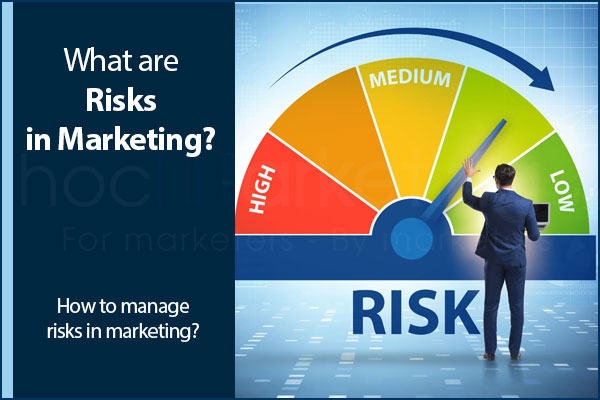
Mastering the Risk Matrix: Basics, Implementation, and Hurdles

A risk matrix is a powerful tool used to evaluate and manage risks by analyzing the likelihood and severity of potential consequences It helps organizations identify and prioritize risks, and implement appropriate strategies to mitigate them
A valuable tool for evaluating risk and its potential impact is a risk matrix. By weighing the probability of an event against the severity of its consequences, this simple matrix can provide greater insight and understanding of risks, ultimately leading to more informed decision-making.
Meaning and Explanation
A situation where the result of a decision cannot be guaranteed is referred to as a risk. To assess the severity of potential outcomes, they are evaluated and plotted on a risk matrix.
Every business venture involves risks that must be taken in order to succeed. However, it is equally important to assess the potential consequences of those risks, as well as whether the organization can withstand the impact of any negative outcomes. This is why a risk matrix is essential for plotting the severity of potential harm and understanding the downside of taking a particular risk.
Basics of Risk Matrix
Risk management is crucial for organizations to prepare for potential negative impacts on their business. Risks can vary in severity and the use of a risk matrix helps to identify the magnitude of the risk, as well as determine whether it can be controlled or if avoidance is necessary.
The risk matrix is a tool used to assess the potential impact and probability of risks. Two key factors that are taken into consideration are the severity of the risk and the likelihood of it occurring. The matrix is typically displayed as a box, with severity on the left side and probability on the bottom. By analyzing these factors, one can determine the severity level of the risk.
Probability
Primary and the probability can be classified into five categories in which the risk can fall. Following are those 5 types of probabilities in risk matrix:
1) Unlikely
Rare risks are those that have a very low probability of occurring, less than 10%. Despite their low likelihood, it is important for businesses to consider these risks because if they do happen, the impact on the business can be significant. Therefore, it is essential to have measures in place to mitigate the effects of rare risks.
An example of an unlikely probability would be a certain reaction associated with a new treatment drug.
2) Seldom
These risks may not be as rare as those in the unlikely category, but they are still considered serious and cannot be ignored.
3) Occasional
Occasional risks are those that have an equally likely chance of occurring or not occurring, at around 50%. These risks have a higher likelihood of happening than seldom risks but a lower probability than likely risks.
4) Likely
Likely risks are those that have a higher probability of occurring, with a chance of more than 60%. For businesses, it is crucial to be well-prepared to face these risks, as they are likely to happen more frequently than other types of risks.
5) Definite
Risks with a probability of 80% or higher are considered definite risks or higher risks. Companies must be prepared to face these risks as they have the highest likelihood of occurring and can cause disruptions in their operations.
While they are large on a qualitative scale, they may differ quantitatively, that is the amount of damage they may cause.
Severity
The amount of harm or damage that can be created by a particular risk is known as severity. Severe damage is identified and classified according to the harm percentage.
The severity of a situation can have a significant impact on various aspects, such as people, environment, assets, and reputation, commonly referred to as PEAR. For instance, if a large piece of machinery is damaged in a warehouse, it can have adverse effects on people, assets, and reputation. The person operating the machine may sustain injuries, the machinery may become unusable or damaged, and the safety reputation of the organization may be at risk. To classify the severity of risks, the risk matrix is categorized into different types.
1) Insignificant
Risks that have a minimal or negative impact are considered insignificant. In the event that these risks do occur, they are unlikely to cause significant harm to the reputation of the business or individual involved.
2) Marginal
A marginal risk is identified when damage occurs during the progress of a project. Such risks are intermediate in nature, falling between moderate risks and insignificant ones in terms of impact.
3) Moderate
Moderate risk is characterized by damage that is noticeable but not very likely to occur. The impact of moderate risks is slightly higher than that of marginal risks.
4) Critical
Critical risks pose a grave threat to businesses and their consequences can be devastating. Such risks can lead to significant financial losses and damage to a company's reputation. While critical risks are not as catastrophic as some, they are more noticeable than moderate risks and require immediate attention.
5) Catastrophic
Catastrophic threats are the most dangerous among all the potential risks, as they can inflict substantial harm that might prove irreparable for a project or business. These threats can reduce the project's productivity to zero and should be given the highest priority when it comes to risk management.
Implementing the risk matrix
After identifying and assigning the appropriate risks in the matrix, the consequences and likelihood of each risk become more apparent. This allows your organization to prioritize which risks should be addressed first. The risks are classified into four categories, each represented by a different color, indicating the level of severity and risk at a quick glance.
Following are four categories that are used in the risk matrix:
1) Extreme Risk Matrix
Risks labeled as extreme pose the highest level of danger and require urgent attention during firefighting operations. These risks are identified by their red color coding and are deemed critical to the safety of all involved. The project team must take swift action to mitigate these risks and ensure their elimination.
2) High Risk
The risks with a pink background are classified as high-risk and demand immediate action and risk management strategies from the organization. In addition to risk elimination, the substitution strategy can also be effective for these risks. If immediate resolution is not possible, a strict timeline must be established to ensure that these risks do not cause significant obstacles to the project.
3) Medium Risk Matrix
Orange color-coded risks require the implementation of a risk management strategy by taking proactive steps in a timely manner. While it's important to identify and sort these risks early on, there's no need for an immediate solution and they don't demand extensive use of resources.
They can be managed on the basis of the experience of senior management and with the help of logical planning and smart thinking.
4) Low-Risk Matrix
Hurdles of the risk matrix
Often overlooked are the green-colored cells that don't pose a significant issue, but they still warrant attention and corrective action to enhance project performance.
While many organizations have found the usefulness of the risk matrix in their activities, there are many problems with it as well.
Following are few of the problems associated with risk matrix:
1) Poor resolution
Only a small fraction of hazards can be compared by a risk matrix which is correct. Different risks get identical ratings quantitatively.
2) Errors
Higher quality ratings can lead to assigning more risks in the risk matrix, which can result in mistakes. In some cases, decisions that are worse than random can be made due to negative correlations between risks and their associated frequencies and varieties. This renders the information worse than useless.


















